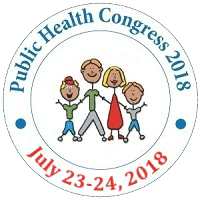
Deepak Timsina
Worldwide Intellectual Property Solutions, Nepal
Title: Dimensional Intervention For Improving Health Care Waste Management In Nepal
Biography
Biography: Deepak Timsina
Abstract
Statement of the problem: The Nepal Health Sector Strategy (2015-2020) has outlined quality of care through “improved infection prevention and healthcare waste management (HCWM) practices”. The Health Facility Survey (2015) depicts 92% of district hospitals segregate health care waste, but only 77% adhered to the Ministry of Health HCWM guidelines. This study was conducted between mid-2016 and December 2017 to investigate the gaps and feasibility of a quality improvement process through HCWM at District Trishuli Hospital.
Methodology and Theoretical Orientation: The study included a mixed-method baseline assessment to evaluate: a) the quantity of waste (hazardous/non-hazardous) generated b) equipment/infrastructure, c) readiness of the hospital, and d) existing HCWM practices. Based on the findings, awareness raising and capacity building interventions were instrumented for fifteen months, along with a HCWM plan with specific interventions on infrastructure, capacity building and localized actions. Final assessment was held in December 2017.
Findings:
Baseline assessment: Trishuli hospital generated 36.05kg of health care waste daily, composed of hazardous infectious waste (65%), hazardous sharps (16%), pathological waste (15%) and other (4%). Challenges include lack of HCWM plan, lack of technical skills, aggravated by poor hospital infrastructure. Like NHFS findings, the non-segregated wastes were burnt in an open pit near the hospital.
Final assessment: Health care risk waste reduced from 33% -20% of the total waste. While wards practiced proper segregation into color-coded bins, the hospital constructed a treatment plant and institutionalized HCWM through mentoring/coaching and regular monitoring. Hospital had adherence to HCWM standards and increased staff readiness followed by municipal sponsorship on ‘exposure visit’ to health workers to good practices in two other hospitals and commitment to remove treated HCW from the hospital.
Conclusion: Multidimensional intervention covering infrastructure, awareness and capacity development improves HCWM practices to reduce hazardous waste to 20% and adherence to national standards in Nepal.
Key words: health care waste management/guidelines, health care risk waste, mentoring, coaching, awareness raising, district hospital, multi-dimensional intervention.

